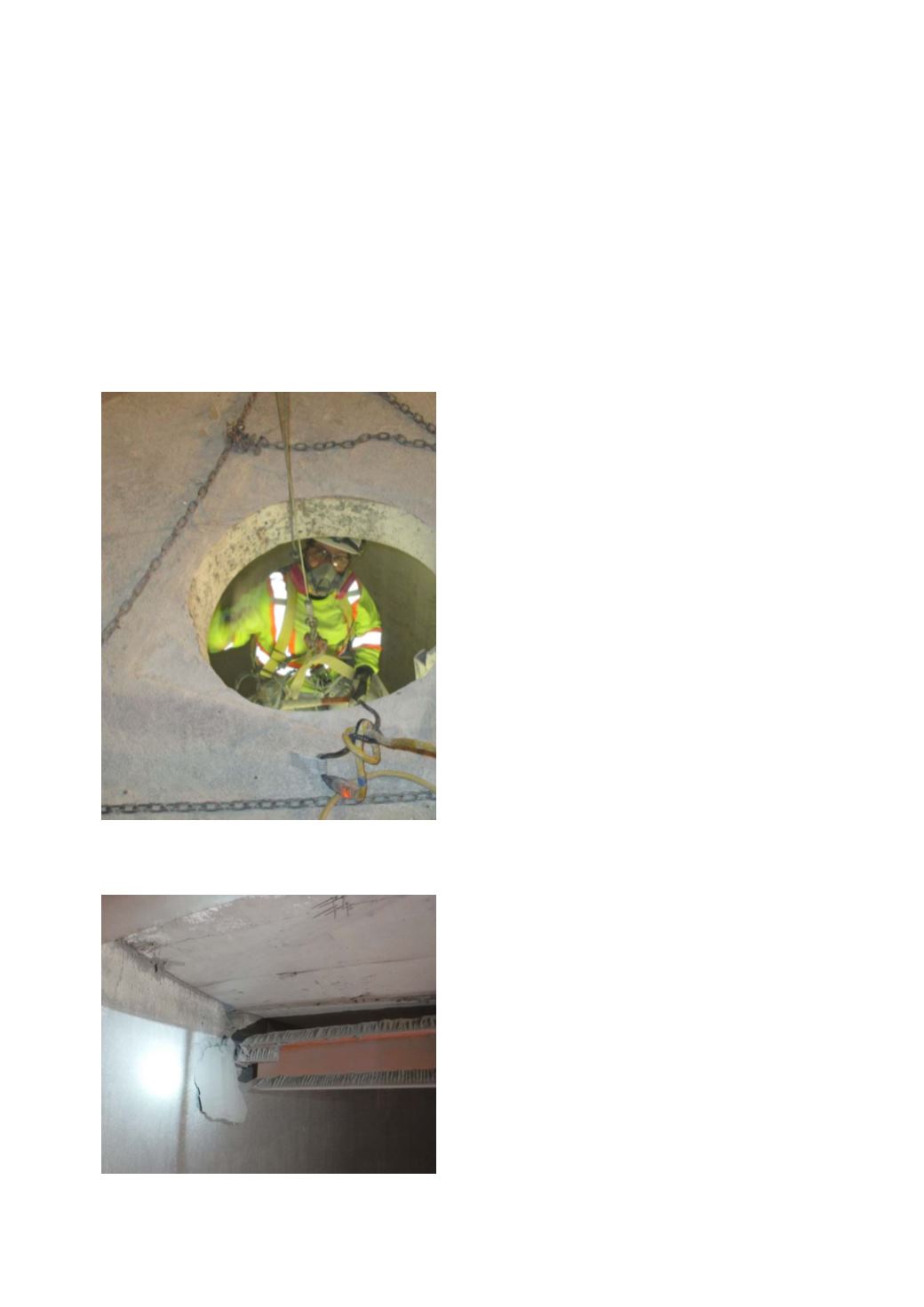
44
World Cement
North America 2019
But a schedule is not the only prompt for
inspection calls. A customer may determine
through an evaluation by their own people that
there is an issue. It could be a silo material
flow issue, an observation of a structural issue,
or some type of a maintenance issue. Cracks
or flow concerns may raise red flags for plant
personnel or an inspector who understands the
configuration of a particular silo, its structure,
material details, and adjacent surroundings.
Once the issues are explained to a silo
expert, digital photographs might be requested
so that a mental picture of the silo can be
garnered. From that, it is possible to generate
a recommendation for an inspection plan.
Hidden dangers
Causes of cracks, leaks, movement between
adjacent structures (such as the floor and a
wall or discharge cone), and even imminent
total collapse may not be obvious to the
untrained eye.
A lot of the time, people will send a picture of
something they perceive to be a problem, but
there may be other issues that are not readily
apparent to someone who is not intimately
involved in silo design.
There can also be timeliness factors involved.
A plant inspection every two to five years is
recommended, even for silos that have been
problem free.
However, when there are structural
problems, these can range from something
very minor to something that could potentially
drive a catastrophic failure. Marietta Silos
has been fortunate enough to catch many
structural issues in advance of a failure, so
that a customer can operate the silo safely.
Delaying inspection also narrows options for
contingency storage, should a problem be
discovered.
The loss of a silo’s storage ability can affect
the whole process of the plant and can shut
the whole plant down, or at least shut that
particular process down. But occasionally,
when there is not any interference with silo
operation, repairs can be carried out from the
outside.
Still, there are occasions when repairs
must be made within the silo structure
itself, meaning the silo will either have to be
completely filled or completely emptied.
Inspections
The three levels of inspection range from
routine to intensive in terms of both cost
and time. These are classified as level one,
level two, and level three.
The level that is chosen depends on the
budget that the customer has in mind, as
well as the problems that might be there.
Sometimes level one is all that is needed or, if
a client explains multiple problems, level three
might be required.
Level one
In this level, a silo inspector examines the
structure exterior and any area that can be
observed, whether it be the roof, walls, cone,
or floors. This tends to cost between US$3000
and US$8000.
Level two
This includes both exterior and interior inspection,
as well as additional personnel, raising the
cost range to between US$10 000 and
Interior inspection requires specialised
confined‑space training to ensure safety and
efficiency.
An interior view of a roof beam that has moved
and fallen out of a beam seat pocket.








